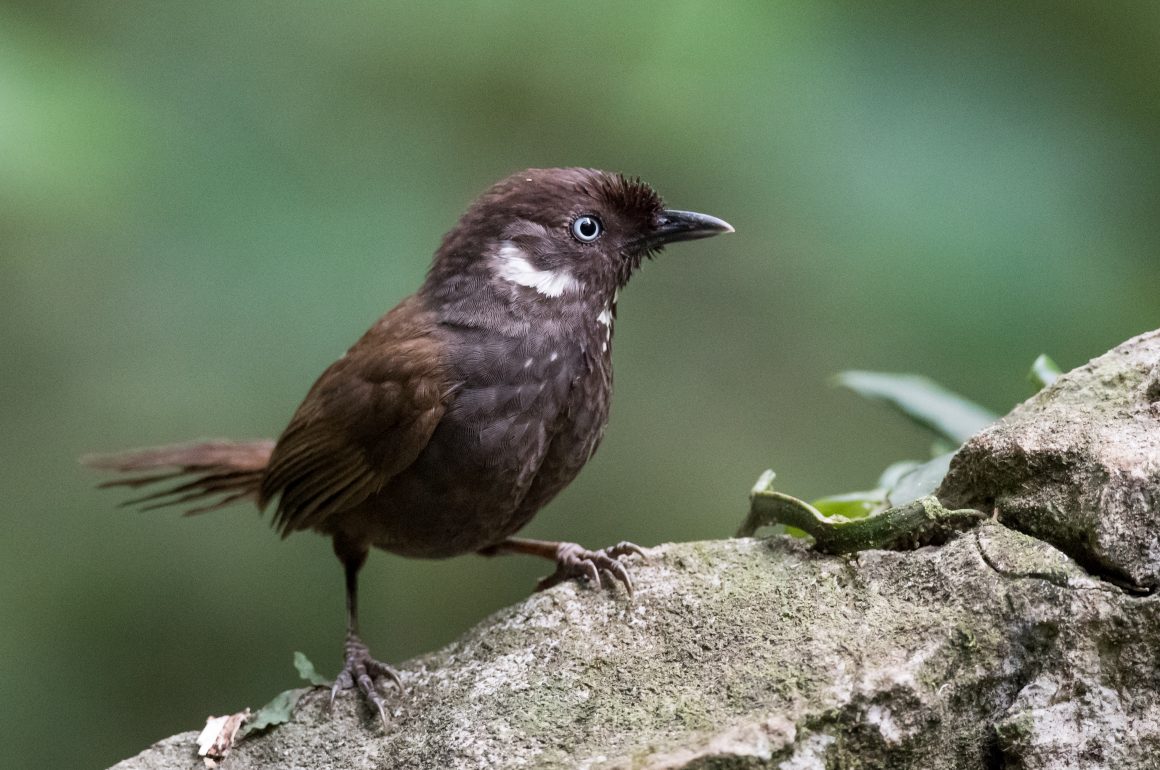
“Mother died today. Or maybe yesterday, I don’t know.”
This is how blog posts would ideally start. Unfortunately, they rarely do. Nor do they tend to cover existentialist issues such as “The Stranger” (Alfred Camus).
Instead, they usually just describe species seen at a specific location, with the vague notion that these descriptions might be interesting to other birders. This is just such a post. The location not being Algiers but rather Nonggang in Guangxi province, China, close to the border to Vietnam. A very rural place, few people, and a landscape more reminiscent of coastal Northern Vietnam than most parts of China.
Perhaps the star bird here is the Nonggang Babbler, which was first observed by professional ornithologists only in 2005. It looks quite distinct compared to some of the other recently discovered species. As the known range is currently restricted to the Nonggang Natural Reserve, it is listed as Vulnerable, though it is fairly easy to see just a few hundred meters away from the local guesthouse. Though it does not have to cramp itself into tight economy seats, it shares with many people a preference for running to flying (Wikipedia).
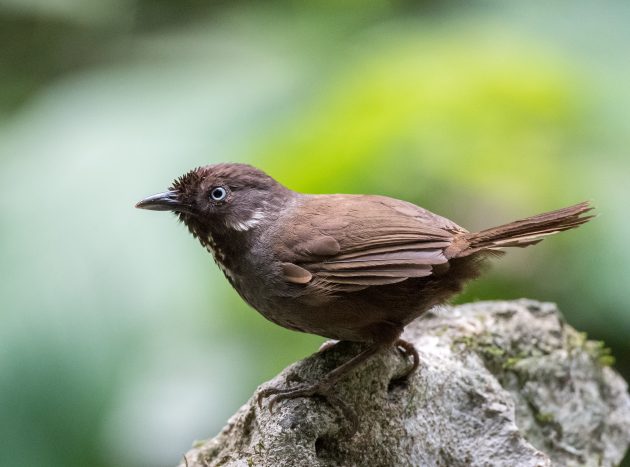
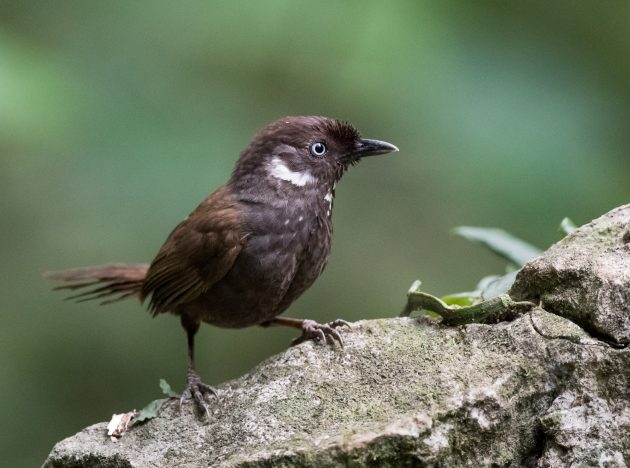
While the Black-throated Laughingthrush is native to Southeast Asia, it is also kept at the Toronto Zoo and has its own web page there. However, as the zoo is (at the time of writing this post) closed due to covid, you still have to leave Canada and come to Southeast Asia to see it. Which (due to covid) you probably cannot.

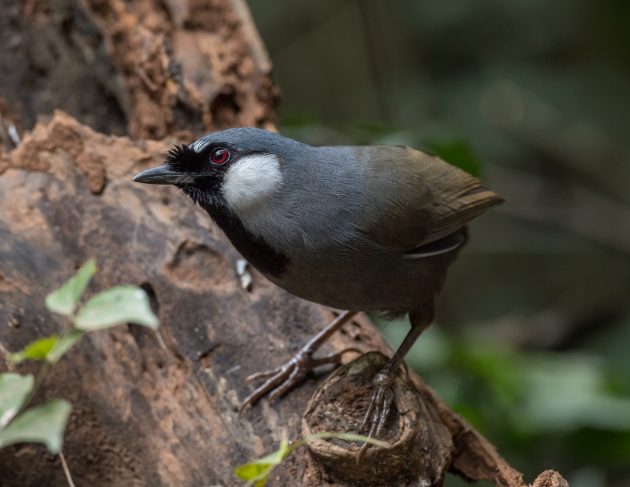
Another local star is the Blue-rumped Pitta. To be fair, it is probably among the less spectacular-looking pittas, but don’t tell them I said that.
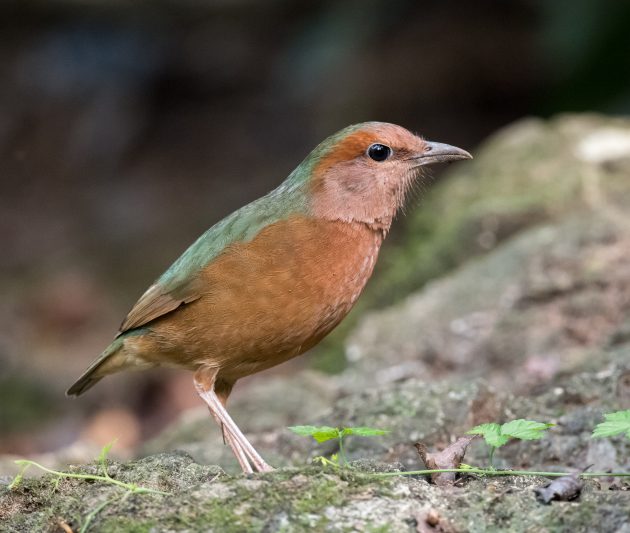
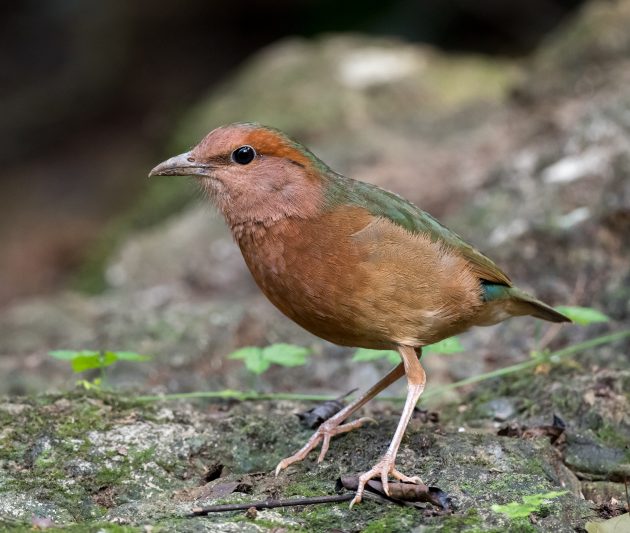
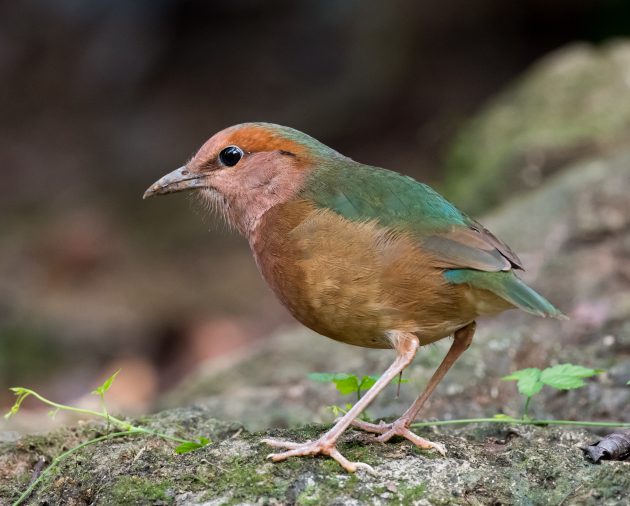
The Chestnut-capped Babbler looks vaguely monkish to me. The skull cap, I guess.
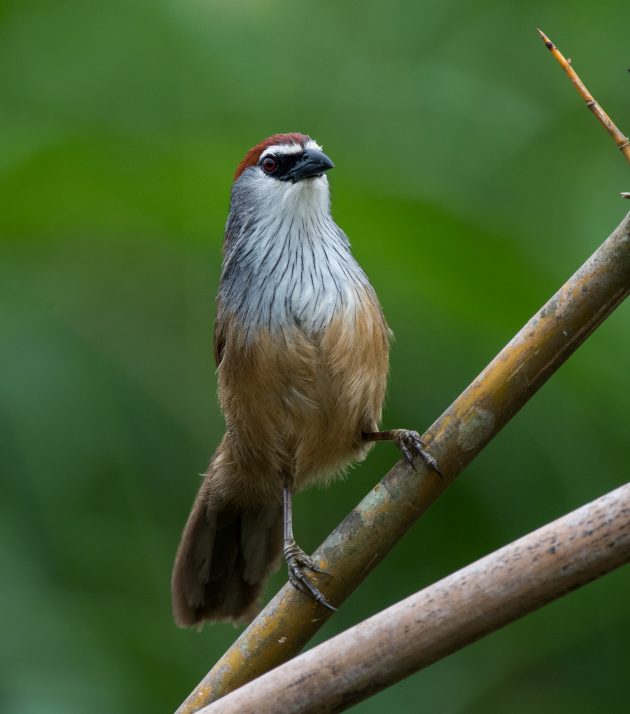
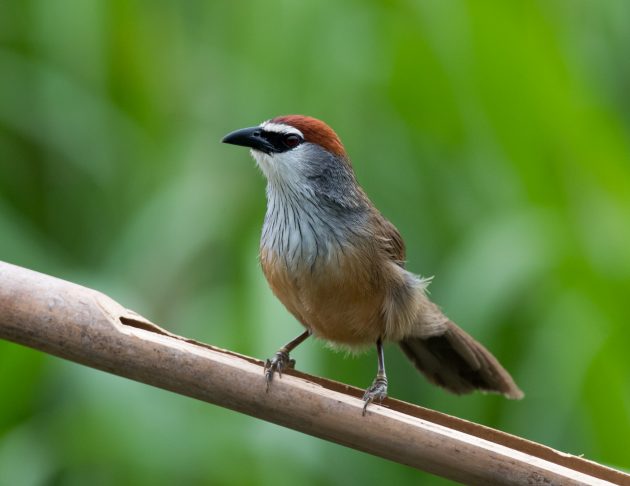
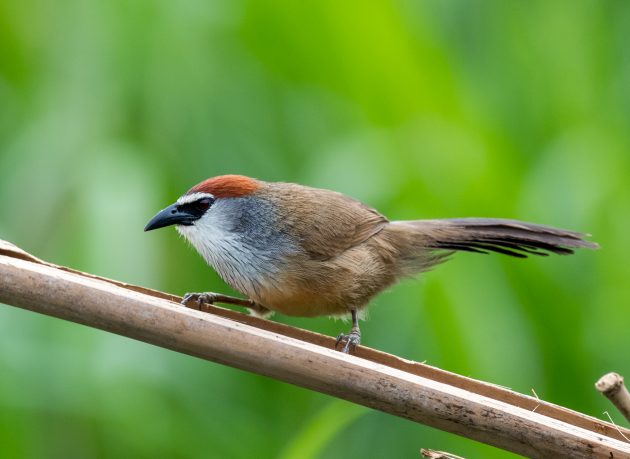
I was surprised to see a ringed Common Tailorbird.
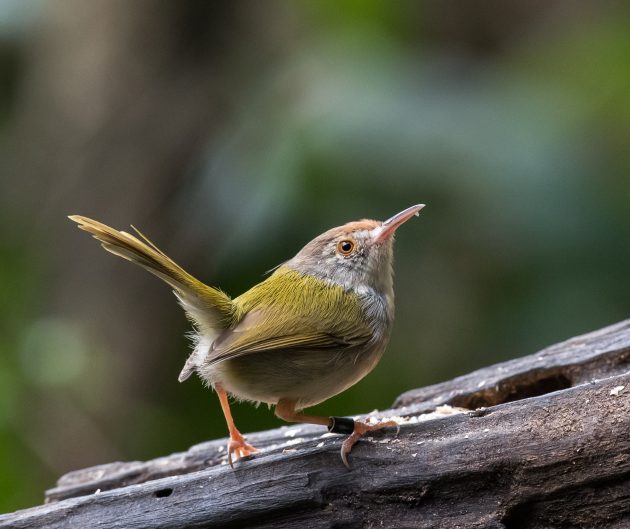
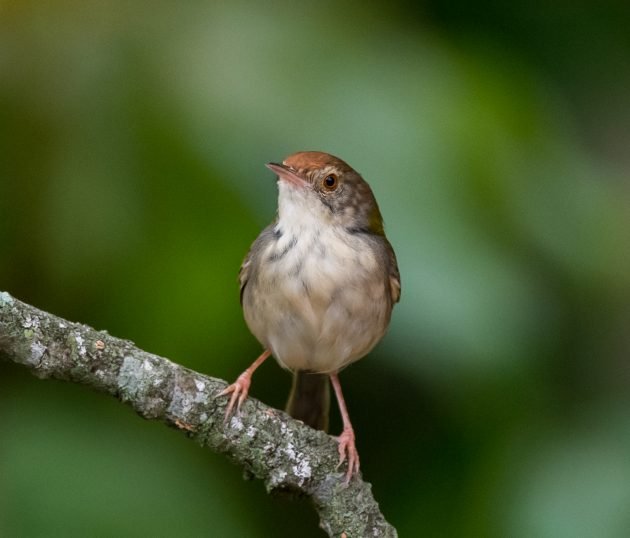
When buntings meet for a family reunion, I can imagine the Crested Bunting is the focal point of the attention – the one that got rich and popular compared to all the others. I guess my sympathy is more with the Plain Bunting, if such a species existed.
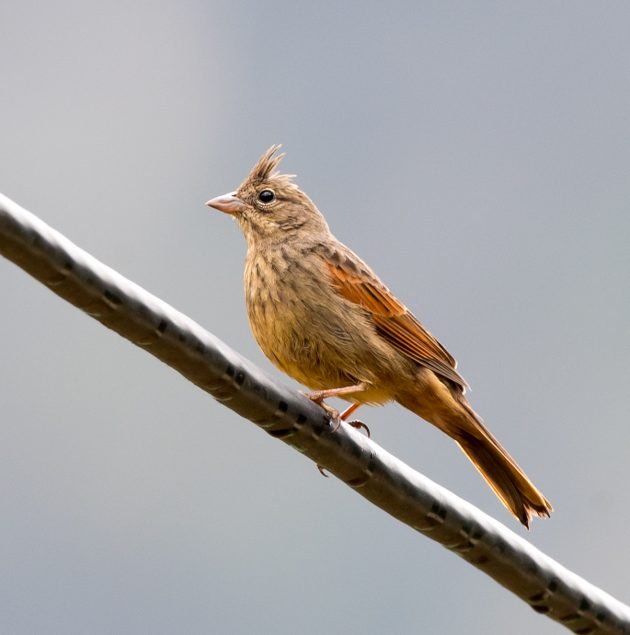
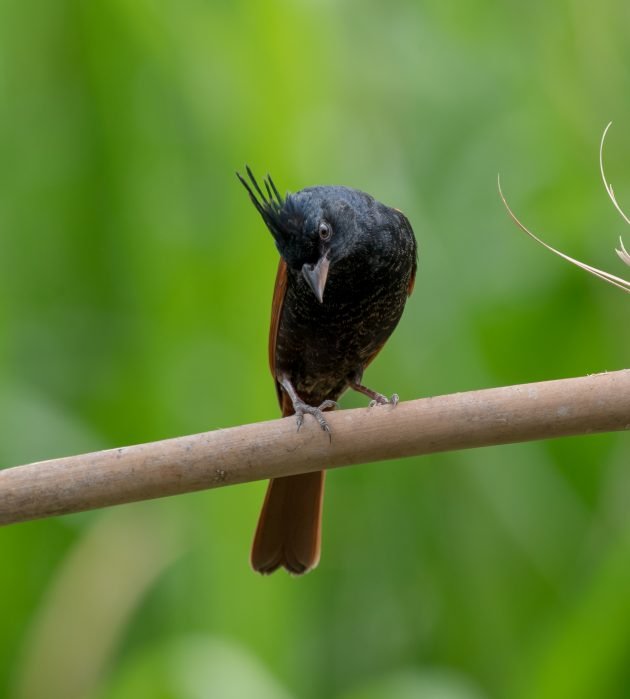
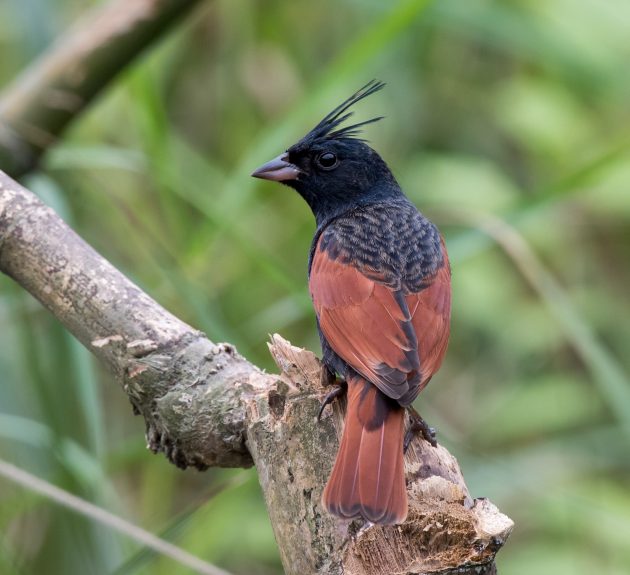
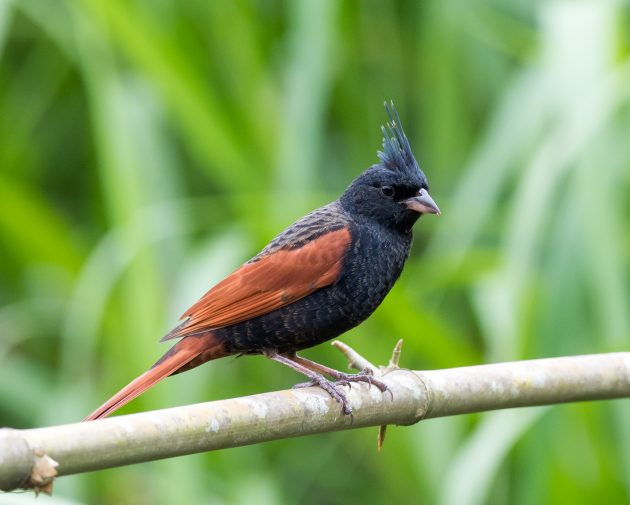
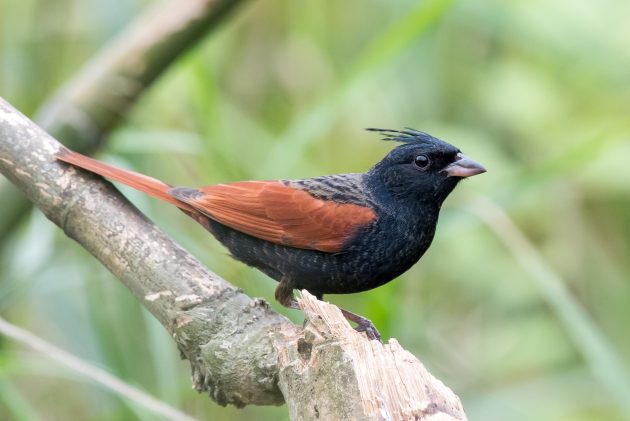
While hummingbirds can tolerate living in regions that use weird units such as Fahrenheit, Feet, Pounds, and Miles, sunbirds generally prefer the metric system. Or to be a bit more scientific (source):
“Sunbirds resemble hummingbirds in that they are small, often colorful, and very active, and they feed primarily on nectar. A major difference is that sunbirds feed while perching and hummingbirds usually feed while hovering. The birds are not closely related. The similarities are a product of convergent evolution. Sunbirds are songbirds, while hummingbirds are akin to swifts. Sunbirds and hummingbirds are ecological equivalents — unrelated but occupying similar niches in different ecosystems. Sunbirds are found in Africa and Asia, while hummingbirds are restricted to the Americas.”
Possibly, hummingbirds and sunbirds also differ in their attitude towards gun control.
The two sunbird species I saw at Nonggang were Fork-tailed Sunbird …
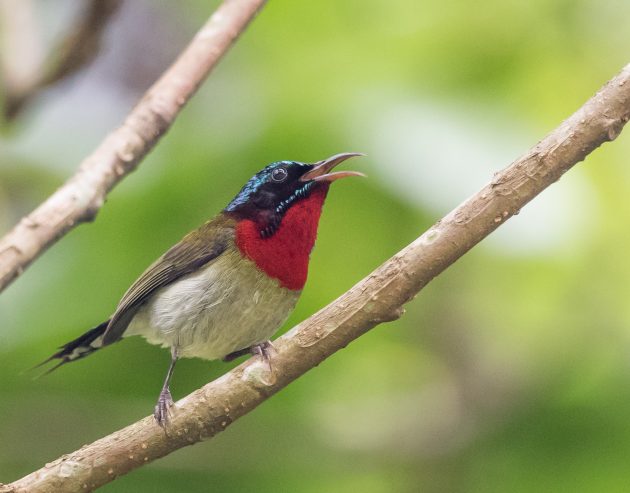
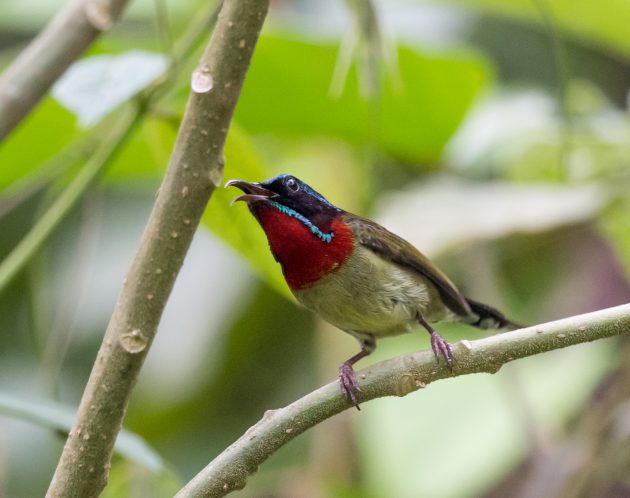
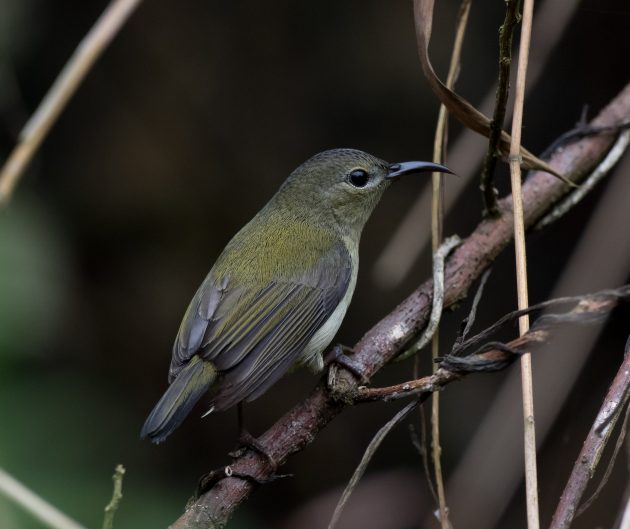
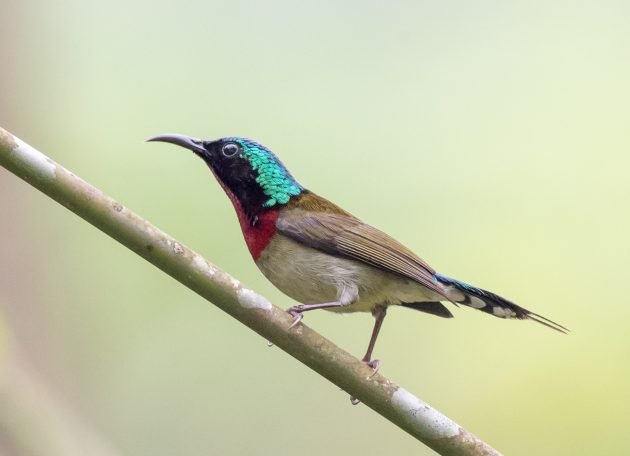
… and the Olive-backed Sunbird.
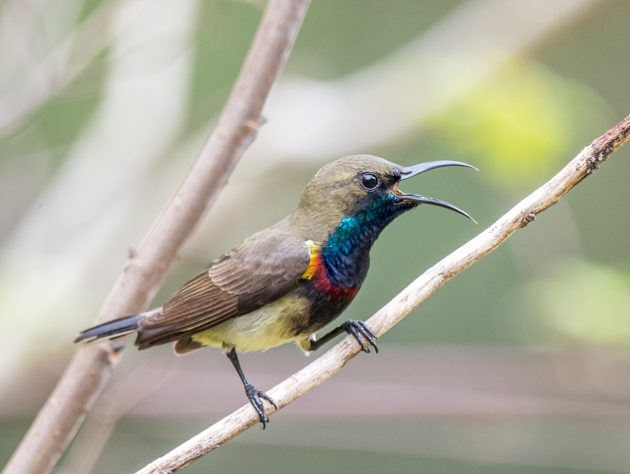
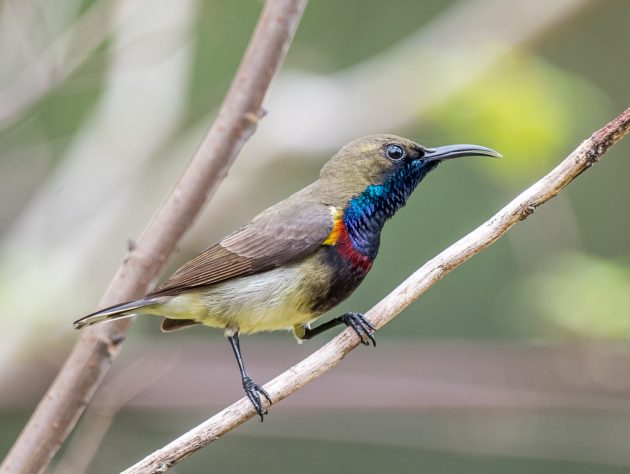
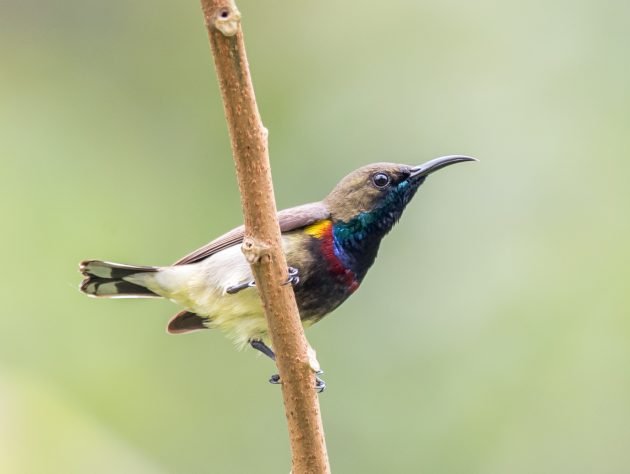
Whenever there are forms to fill out and names to register (not infrequent at times of covid and while living in a foreign country), I am grateful for having a rather short name. Meanwhile, the Pin-striped Tit-babbler curses its fate.
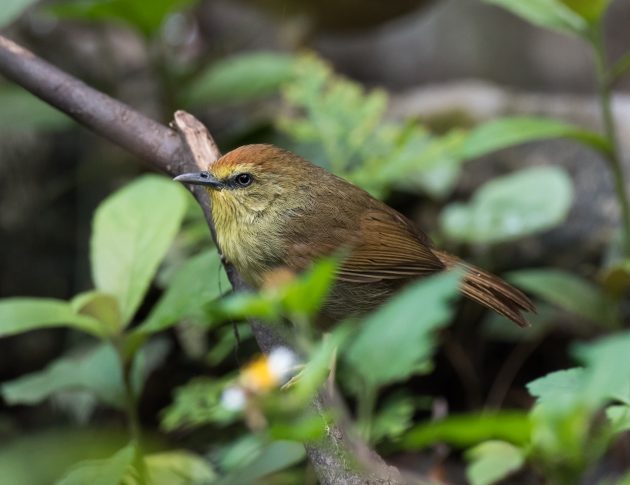
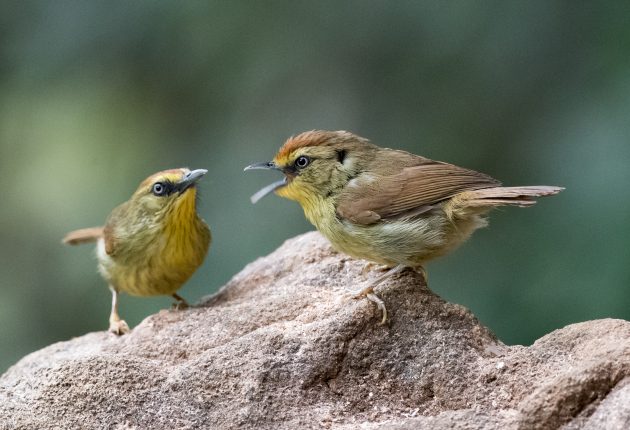
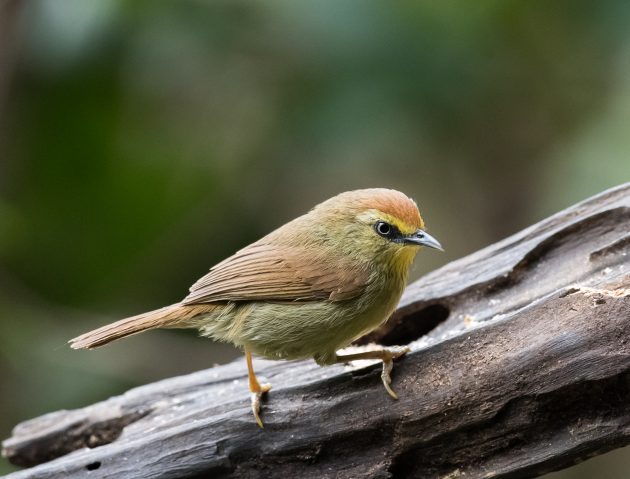
Nongang has a fairly large number of babblers. The Nonggang Babbler shown earlier is a good illustration of the Wikipedia statement that “this group [Old World Babblers] is among those Old World bird families with the highest number of species still being discovered.”
Partly this is because apparently traditionally during much of the 20th century, the family was used as a “wastebin taxon” for numerous hard-to-place Old World songbirds (Wikipedia), leading a German ornithologist, Ernst Hartert, to rhyme in 1910 “Was man nicht unterbringen kann, sieht man als Timalien an.” The English translation does not rhyme as nicely (“What one can’t place systematically is considered an Old World babbler”), and once you have finished the explanation that timalia is the Latin name for this group of birds, the time to laugh has pretty much gone. But still.
So, we have the Grey-throated Babbler …
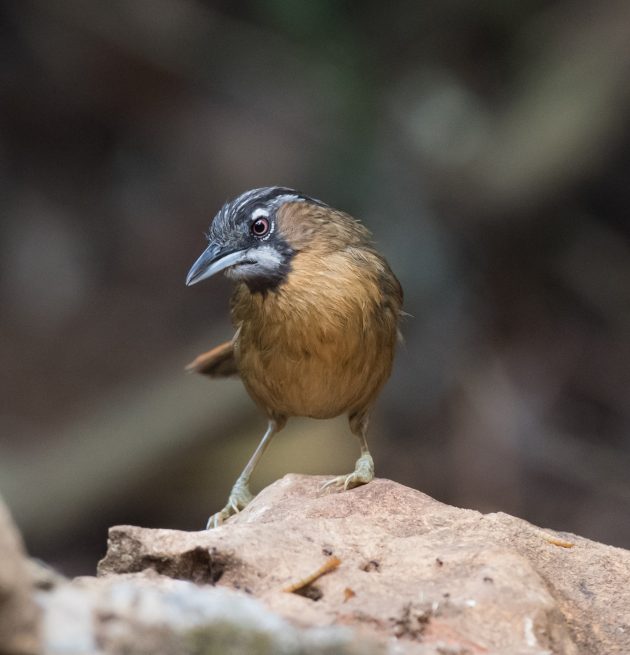
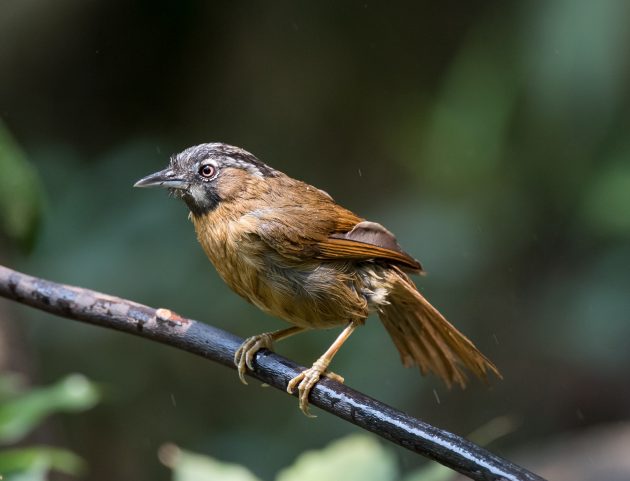
… the Rufous-capped Babbler …
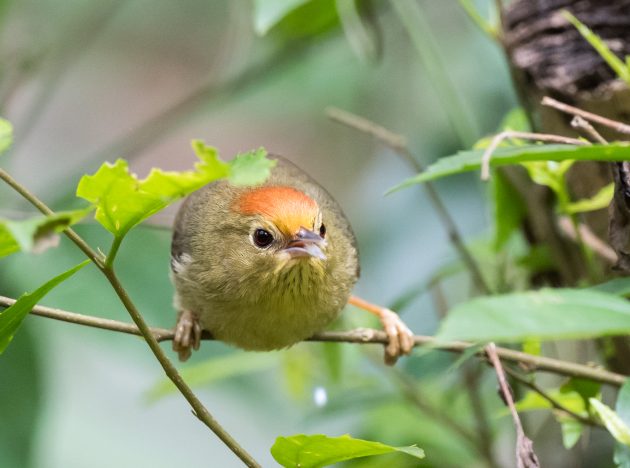
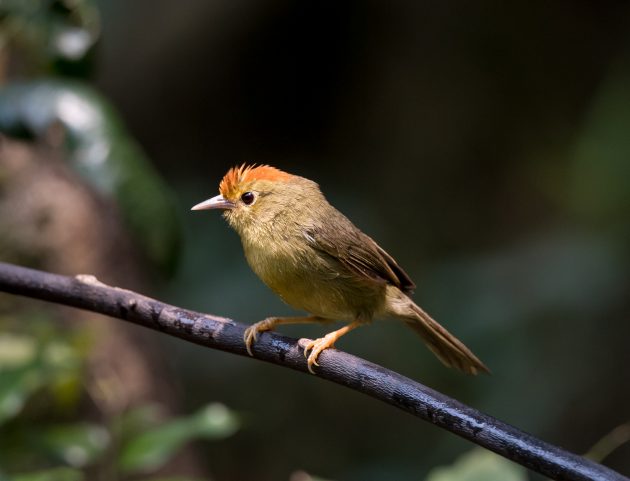
… the Spot-necked Babbler (on the first photo looking as if it is expecting to be subjected to the ice bucket challenge any moment now) …
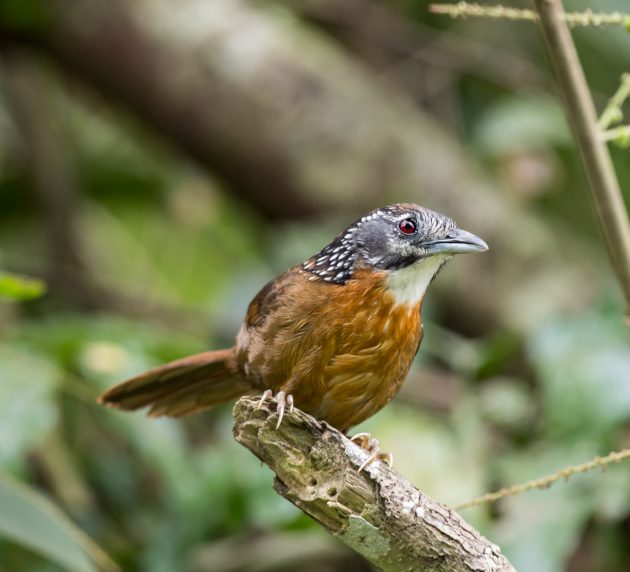
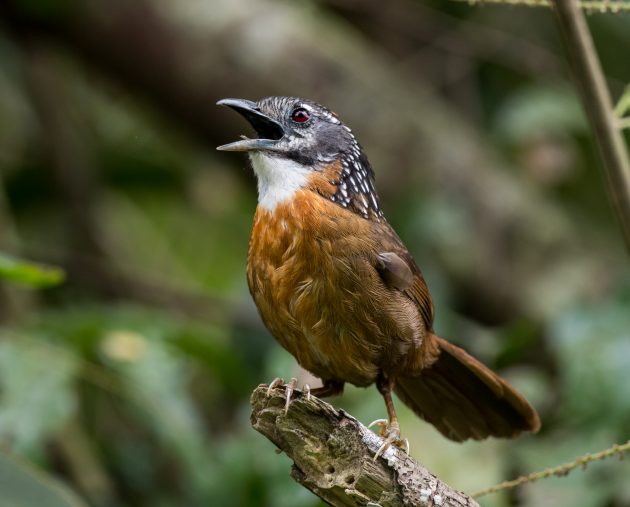
… and the rather attractive Streak-breasted Scimitar Babbler.
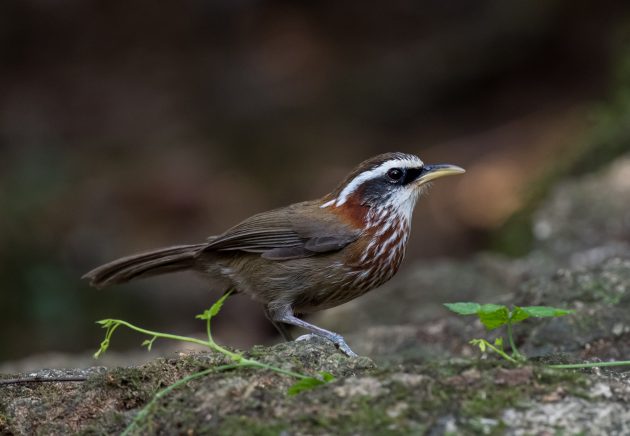
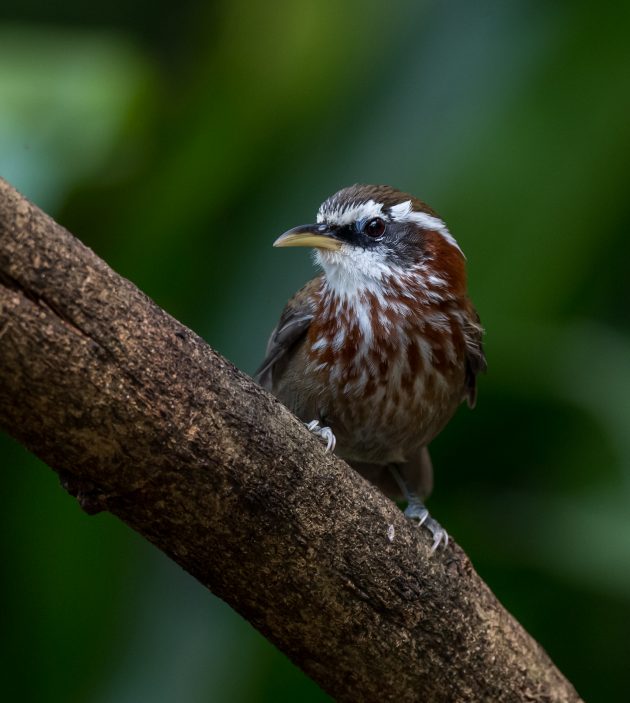
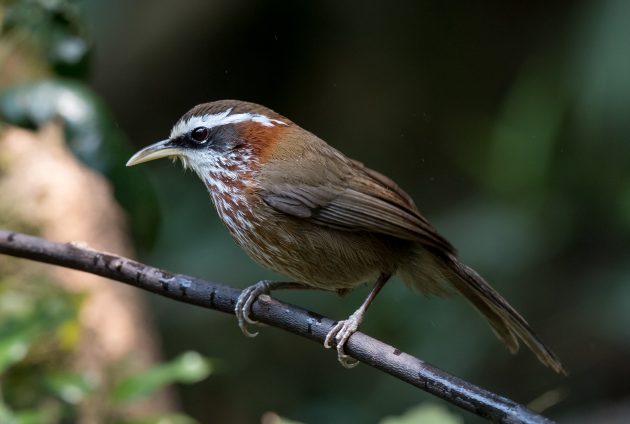
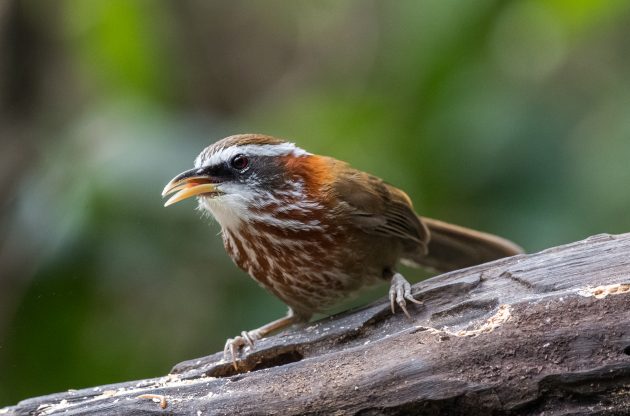
The next bird’s abbreviation in the world of popular music is TBFKAGCF (the bird formerly known as Gray-cheeked Fulvetta) – that species was split into four, and not very encouragingly, the HBW states that “The four are now split principally on the basis of molecular divergence, as they all look and sound very similar”. Based on looking at distribution maps, the bird shown below might be a David’s Fulvetta, but for a photographer like me (as opposed to a lister), it does not matter much anyway [Misquoting Pope Innocent III, my motto is “Shoot them all, let God sort them out later].
Apparently, it took this species 5 million years to not change its appearance much at all (HBW: “Molecular data, however, indicate that Alcippe davidi has strongly diverged from all of the other members of this group, having been separated for approximately 5 million years”).
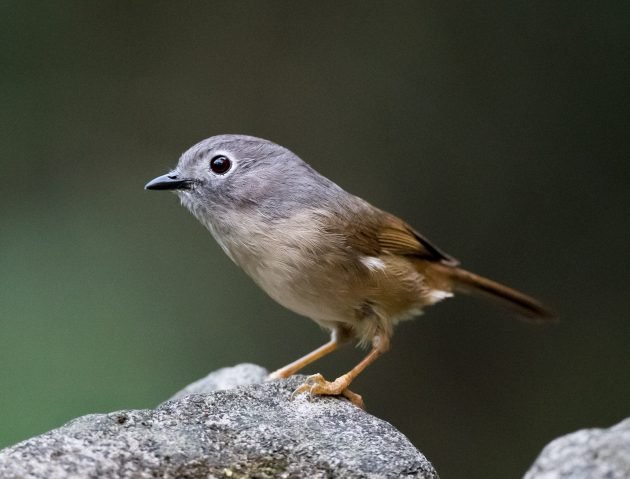
Nonggang also has at least two Cyornis flycatchers (cyornis meaning dark blue): The rather confusingly named Hainan Blue Flycatcher (with a distribution far wider than just Hainan) …
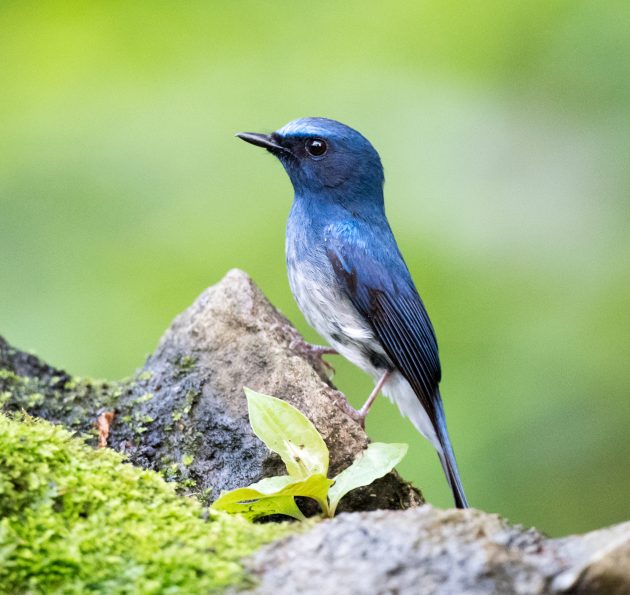
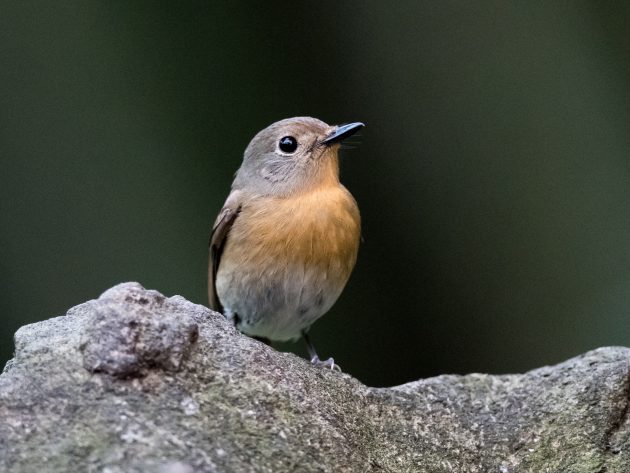
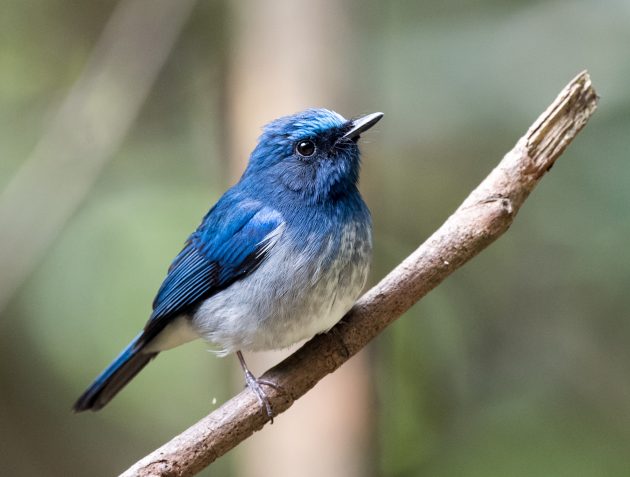
… and the similarly beautiful Hill Blue Flycatcher.
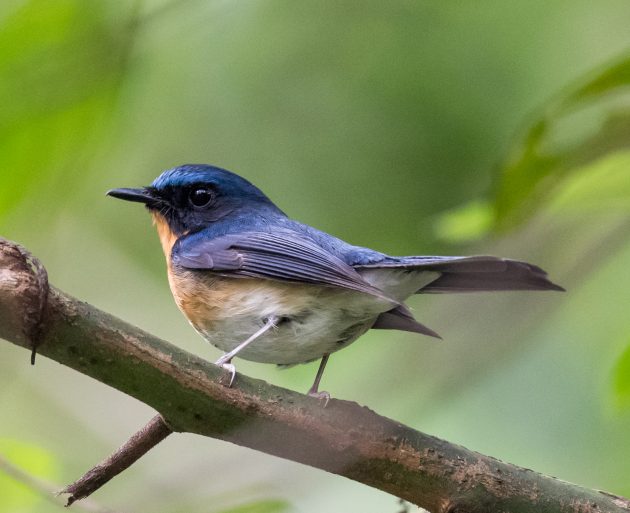
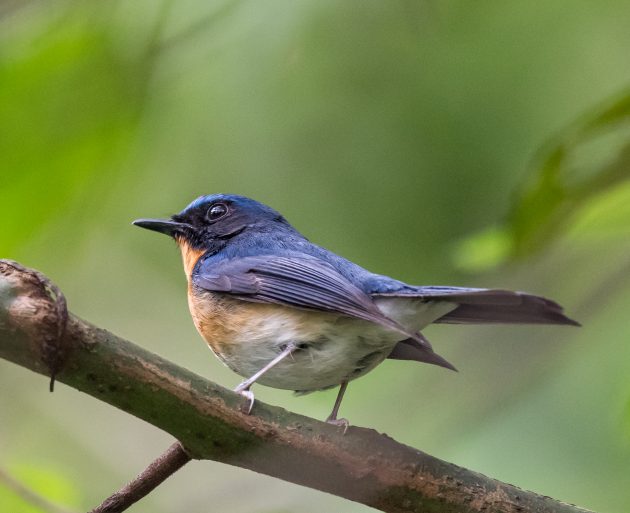
Another highlight of the Nonggang bird population is the Indochinese Green Magpie. Do I hear a faint whiff of disapproval in the eBird description as a “loud, fluorescent green bird”? I am not sure whether the “loud” refers to the color (my favored interpretation) or not (more likely).
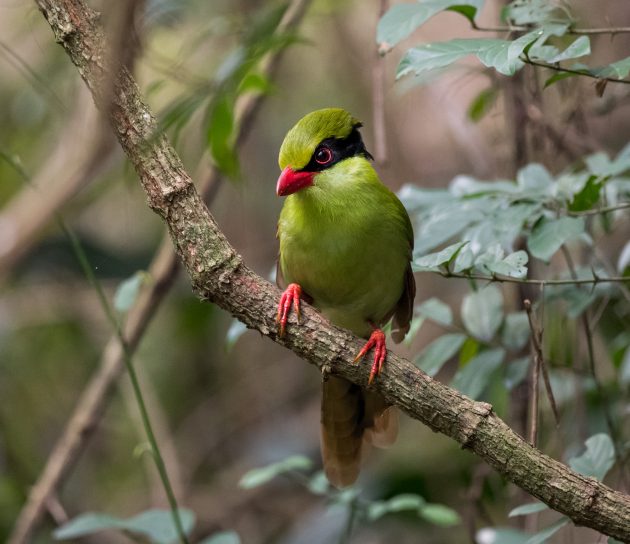
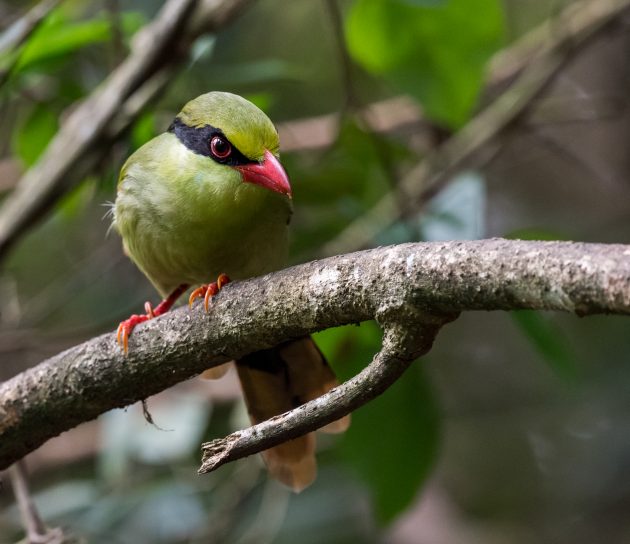
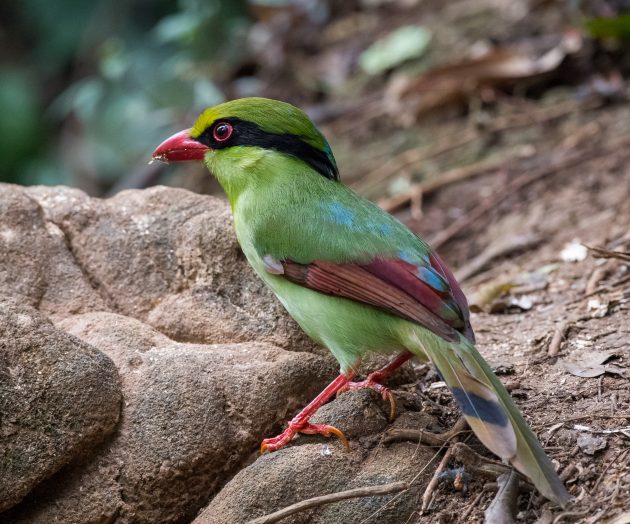
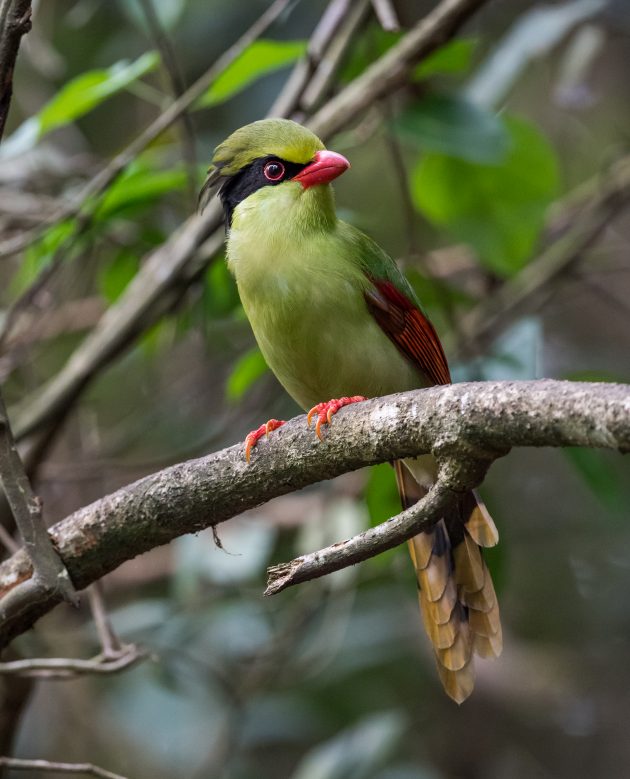
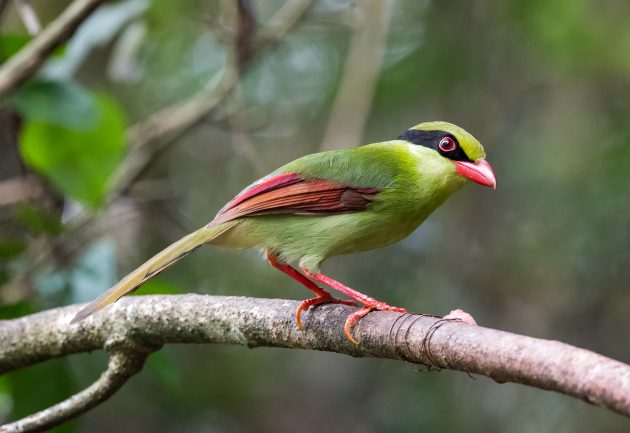
The Limestone Leaf Warbler is another warbler that is frustratingly similar to other species, particularly the Sulphur-breasted Warbler – in fact, the HBW acknowledges as much “all three forms might be united in one species, but present species differs from [Sulphur-breasted Warbler] in its marginally colder yellow underparts and more greyish-tinged upperparts with marginally greyer lateral crownstripes”, which only by liberally utilizing the word “marginally” seems to be able to describe any visible differences at all. No wonder leaf warblers rarely make it into the top 10 lists of any but the most masochistic birders.
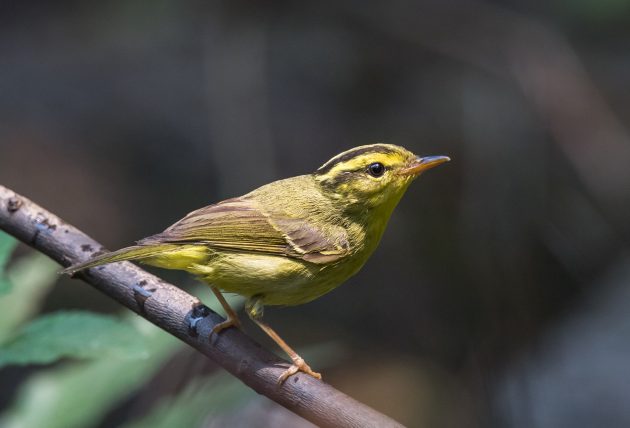
Late march – the time of my Nonggang visit – is a period in which the Long-tailed Broadbill is busy contributing to China’s real-estate boom. Presumably having seen my previous post on Cartoon Birds (possibly using a time machine), eBird describes the species as “a gaudy, cartoonish-looking bird”.
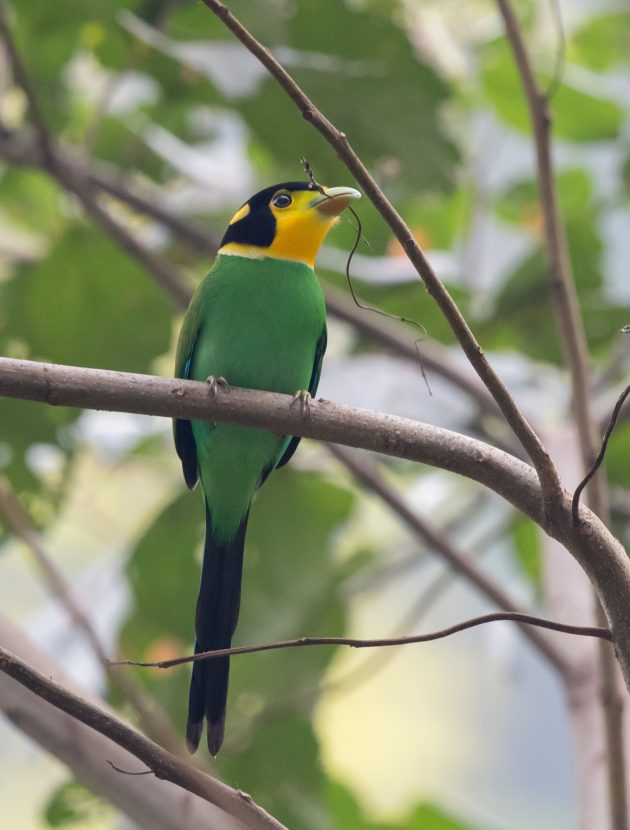
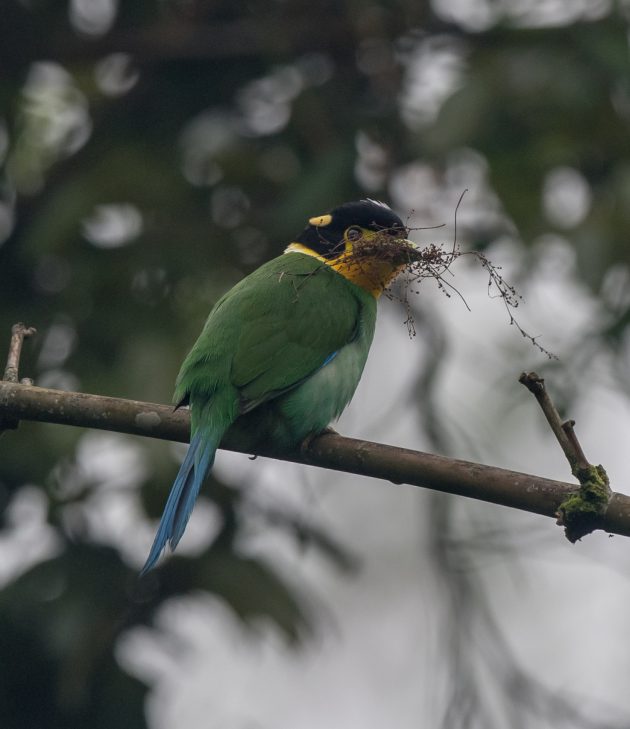
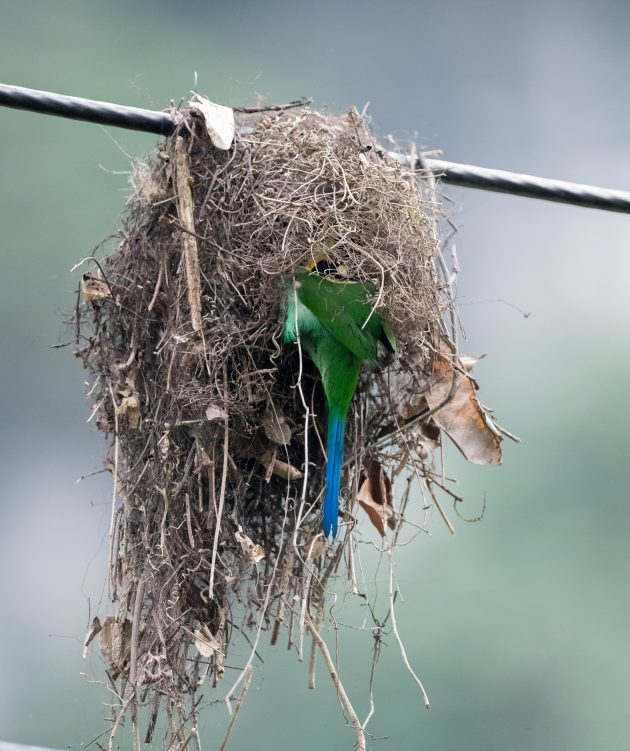
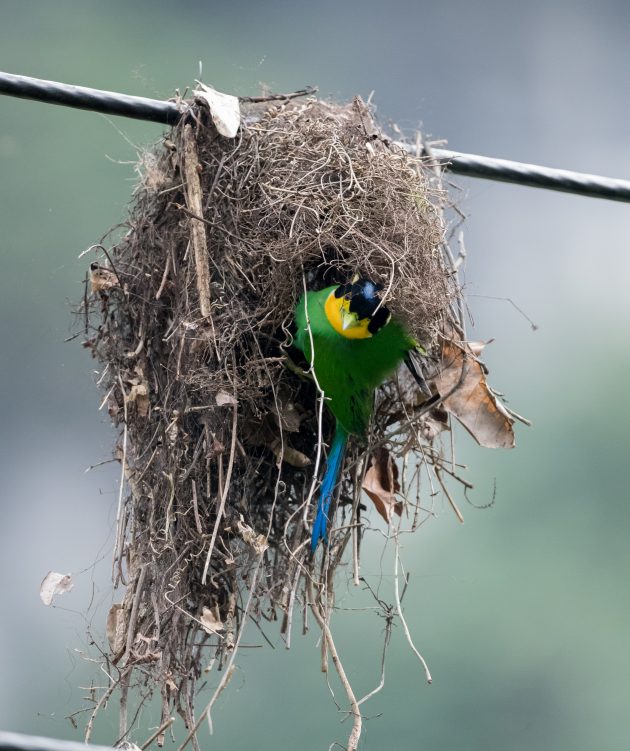
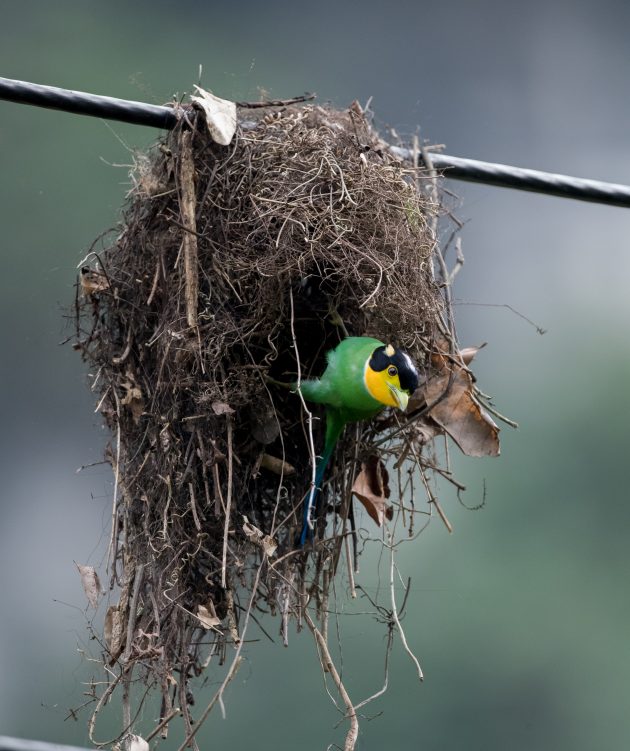
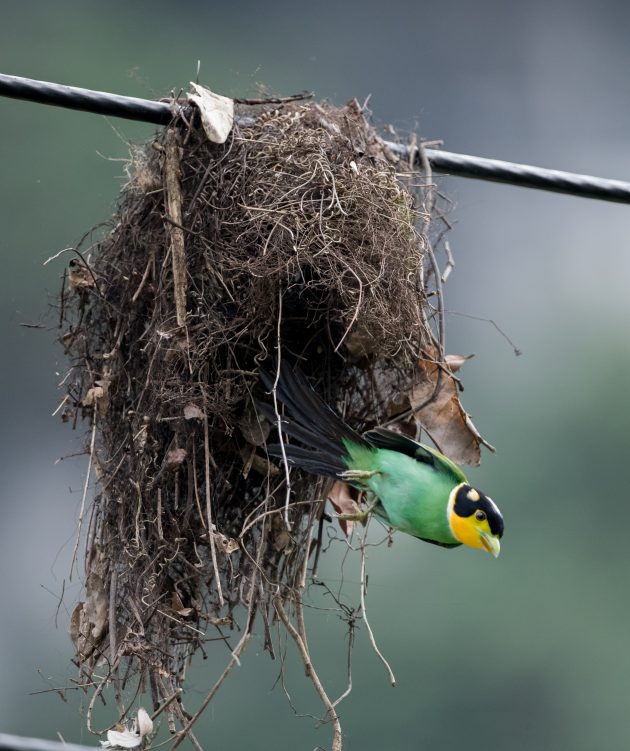
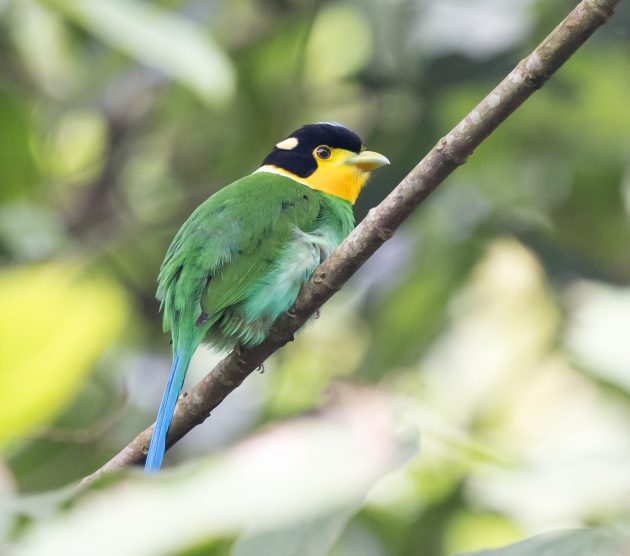
For an in-depth review of bulbuls, see the seminal paper “Pycnonotidae: A Critical Review”. Of course, the paper covers the bulbuls of Nongang, including the Puff-throated Bulbul …
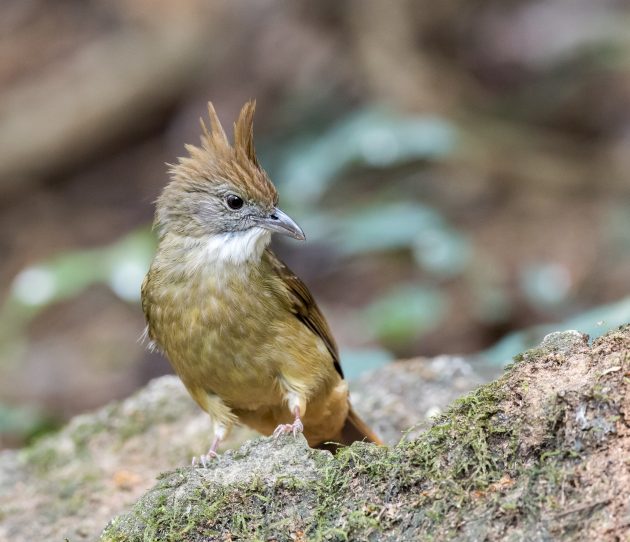
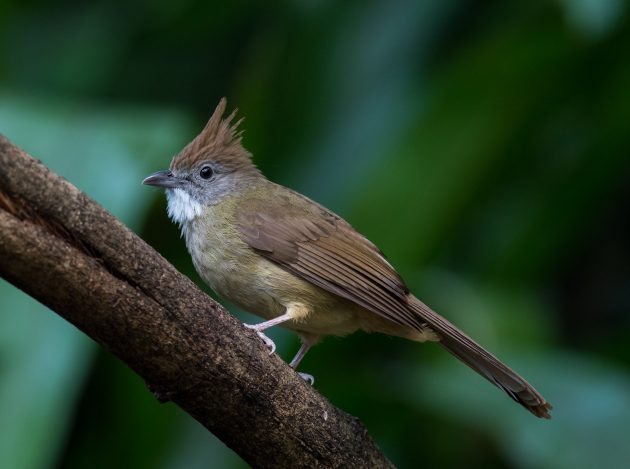
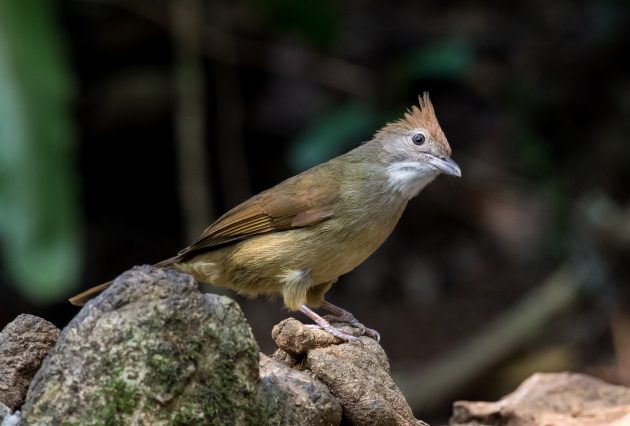
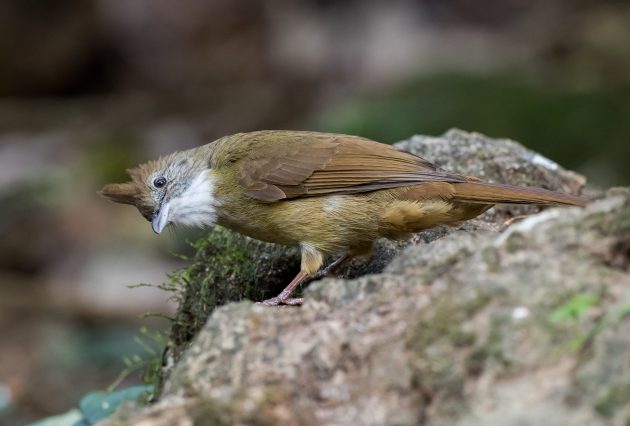
… and the Red-whiskered Bulbul.
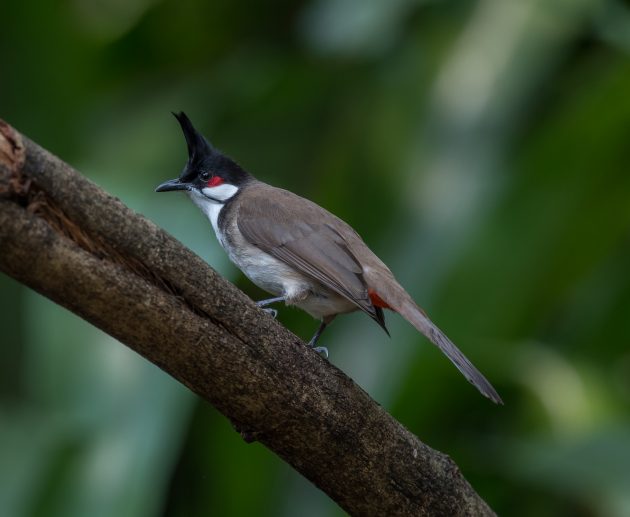
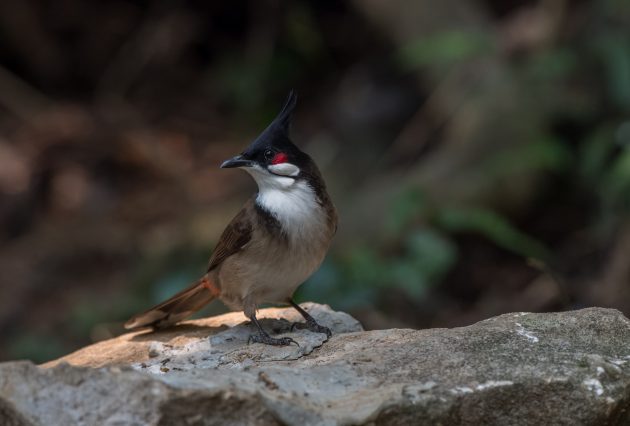
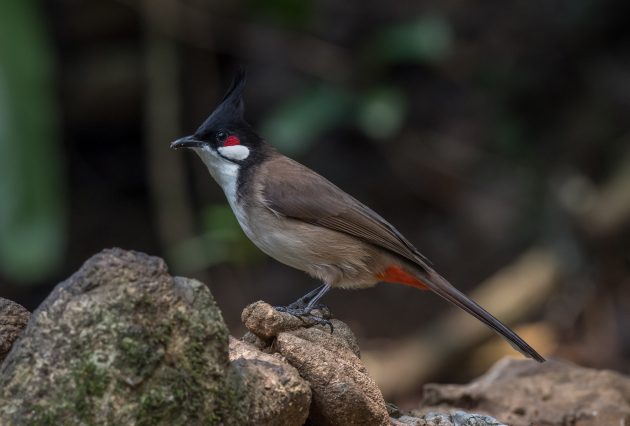
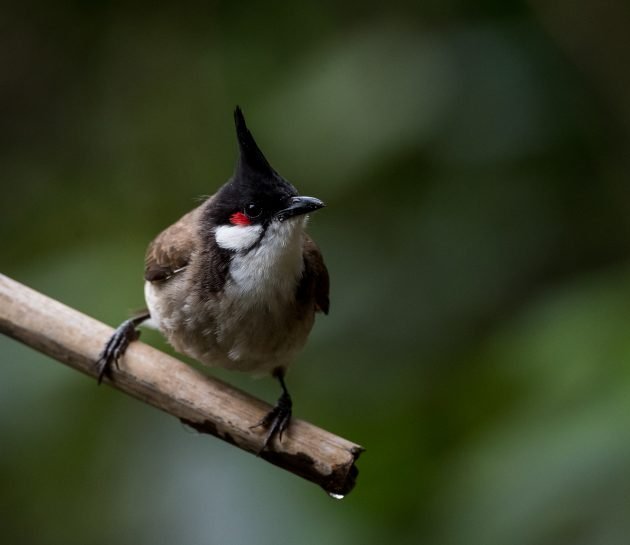
In the entry for the Scaly-breasted Munia, the HBW betrays its America-centered world view by stating (after indicating that the munia is a Southeast Asian species) that due to introductions “in our region, it is now reasonably widespread”. One of my American friends used to always refer to the US as “God’s Own Country”, but that was ironic.
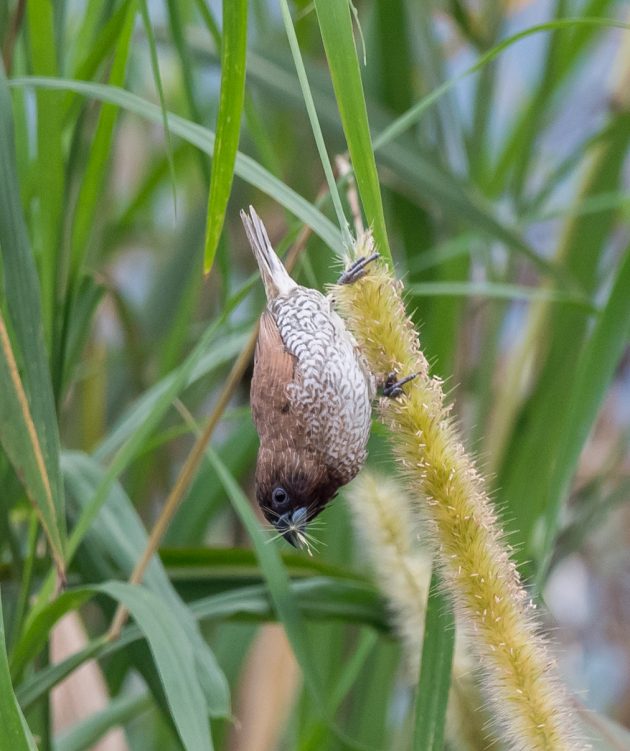
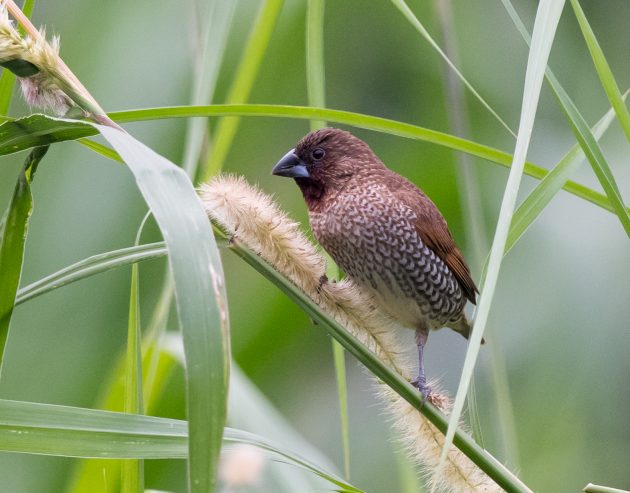
Unfortunately, the story behind the name of Sultan Tit is rather boring – sultan means power or sovereign, so the name is just a slightly pretentious hint at this tit being the largest of its family. Such a striking bird might have deserved a bit more creativity.
The description of its foraging behavior in the HBW is a bit contradictory: “Active and somewhat acrobatic in foraging motions, but rather more lethargic than other parids, and movements often rather stiff.” Anyway, that makes them relatively easy to photograph compared to other tits – always an advantage in my opinion, though not necessarily in theirs. It is also not clear whether allowing bird photographers to get good photos of a species brings specific evolutionary benefits to that species.
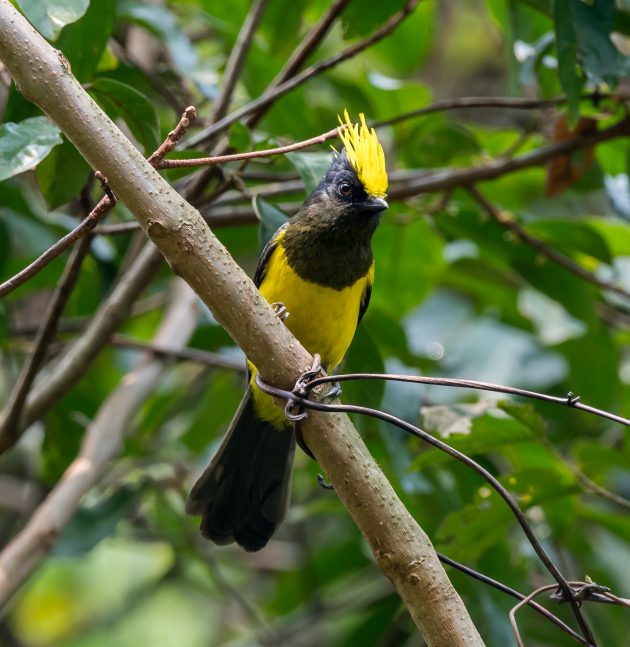
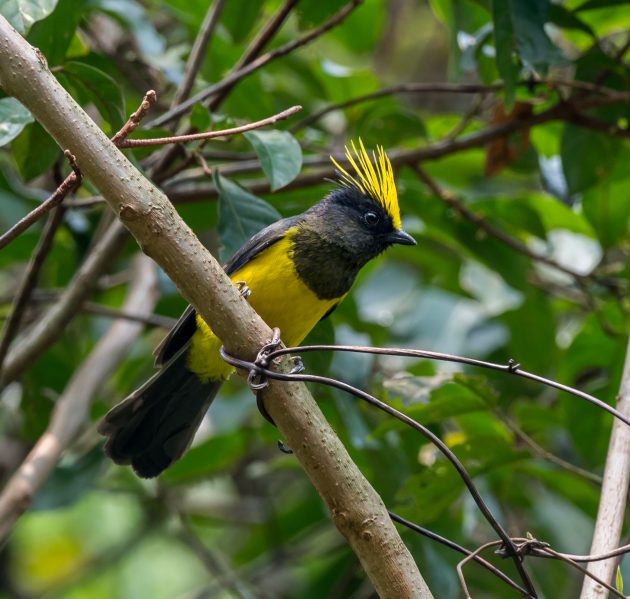
The White-rumped Shama is a Southeastern and Indian species that was introduced to the Hawaiian islands. Consequently, the HBW descriptions of its behavior are logically based on the Hawaiian population: “Since Hawaiian populations may have diverged behaviorally or morphologically from populations of the same subspecies in southeast Asia, all information presented in this account is based on studies of White-rumped Shama populations in the Hawaiian Islands, unless otherwise noted.” Is it easier to get US grant money to study birds in the US? Or is living on Hawaii just more pleasant? My suggestion would be to just do any animal studies at the zoo with the nicest weather.
On the other hand, I heard it is perfectly natural to study traditional Chinese culture not in a Chinese city but in the Chinatown of L.A. or San Francisco. So, maybe I am too picky.
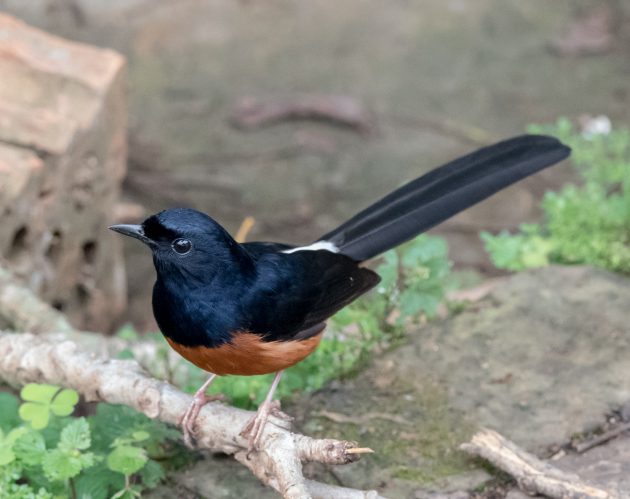

White-throated Fantails (like other fantails) strike me as a bit show-offish with their constant tail opening and closing, but then again, I get most of my food from the fridge, not by catching insects. Or to quote the HBW rationale for the tail movement: “The rapid opening and closing of the tail feathers reveals and hides white tail-spots that are thought to startle insects into moving, revealing themselves and being captured”.
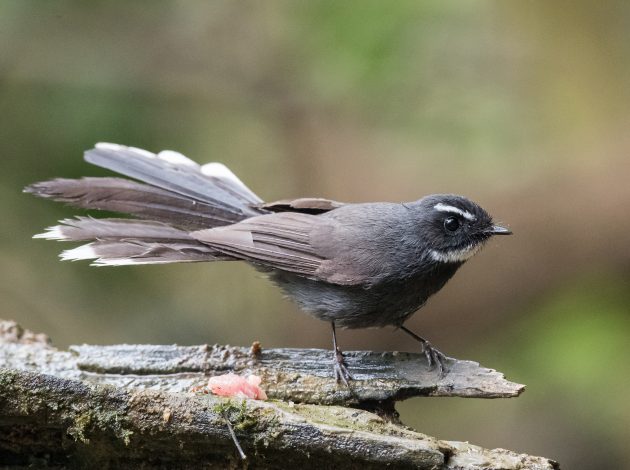
The White-winged Magpie of Nonggang is the black-tailed subspecies that is reasonably common – the gray-tailed one is endangered and lives on Hainan. It may soon be splitsville for black- and gray-tailed (to use the proper ornithological term for an upcoming species split).
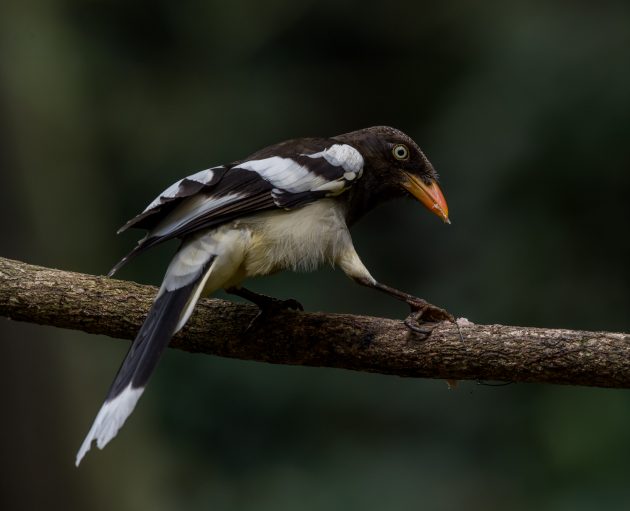
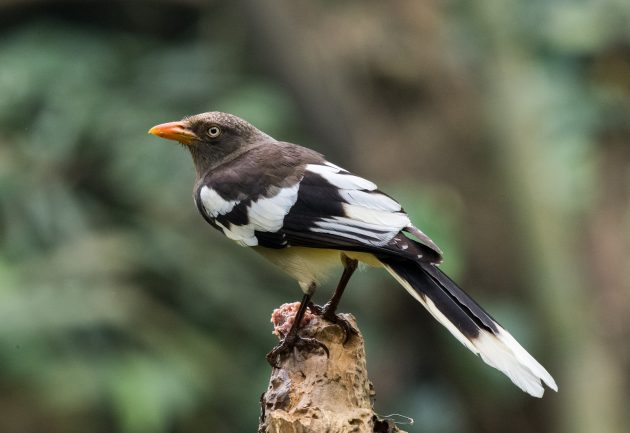
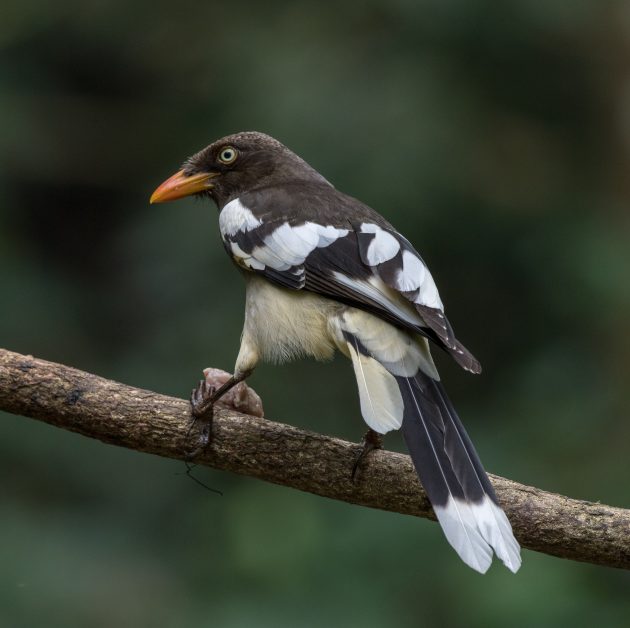
Strange – I was just about to say something relatively positive about the Yellow-bellied Warbler (something I rarely do in relation to warblers) – something about it not looking quite as dull as some other warblers – when I found the following description in the HBW: “A small, rather slim, almost featureless yellow-and-olive warbler”.
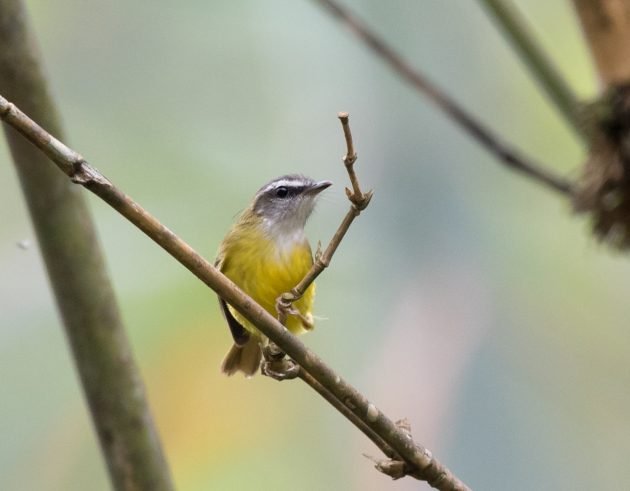
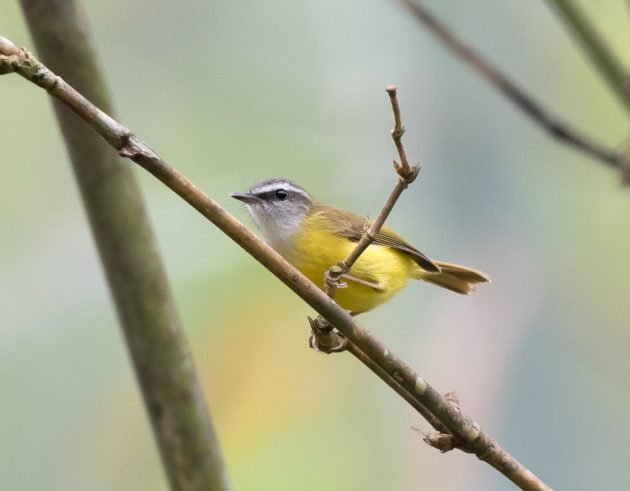
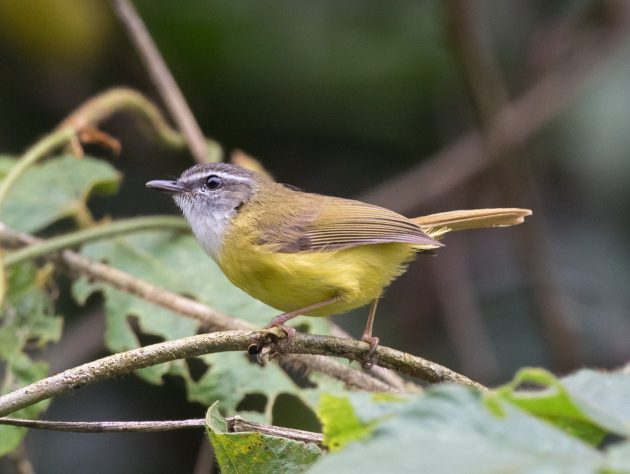
For the Buff-breasted Babbler, the HBW description as “featureless smallish babbler” seems much more accurate.
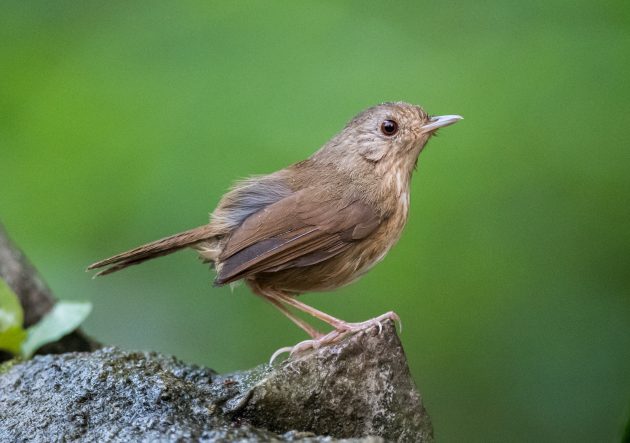
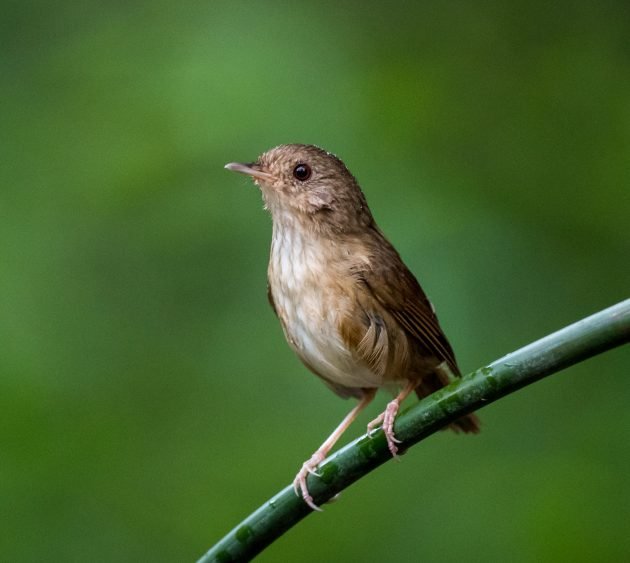
The Streaked Wren-babbler escapes the terrible fate of being described as featureless in the HBW by virtue of its streaking (“smallish, rather short-tailed brown babbler with heavy blackish streaking above”), but just barely (“dull below”).
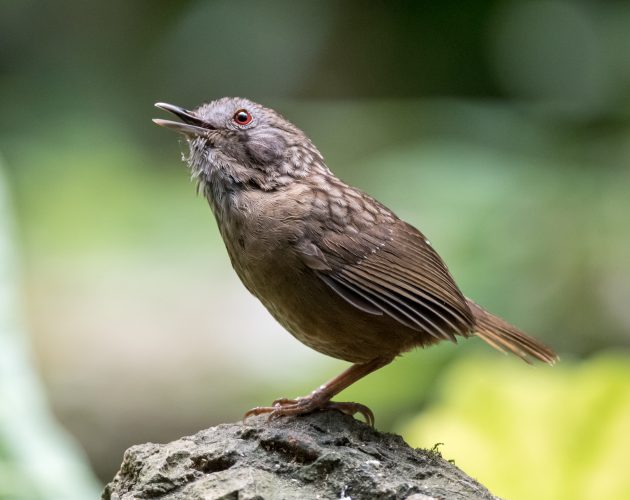
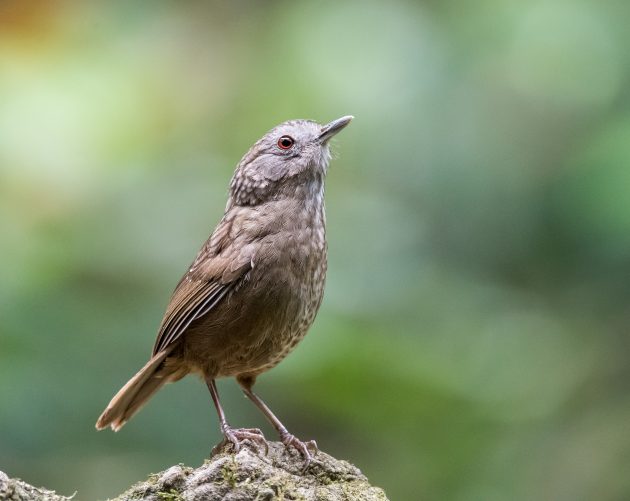
The Yellow-eyed Babbler is yet another bird species that makes me doubt the color perception of ornithologists. Yellow-eyed? Hopefully, when buying fruit, these ornithologists have some assistance to help them distinguish between lemons and oranges.
eBird – presumably imitating my own style before I even started using it – describes the species as “an odd-looking babbler which looks and behaves like a prinia on steroids”.
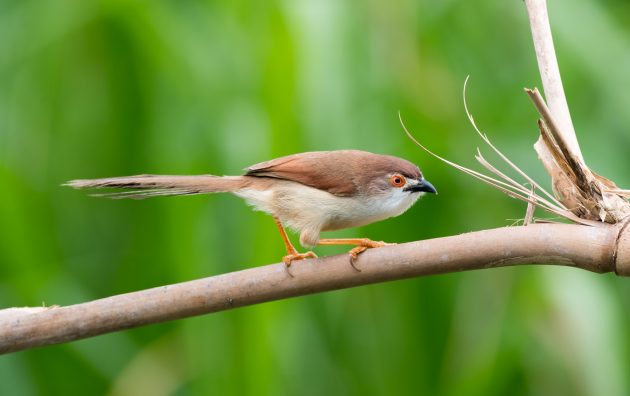
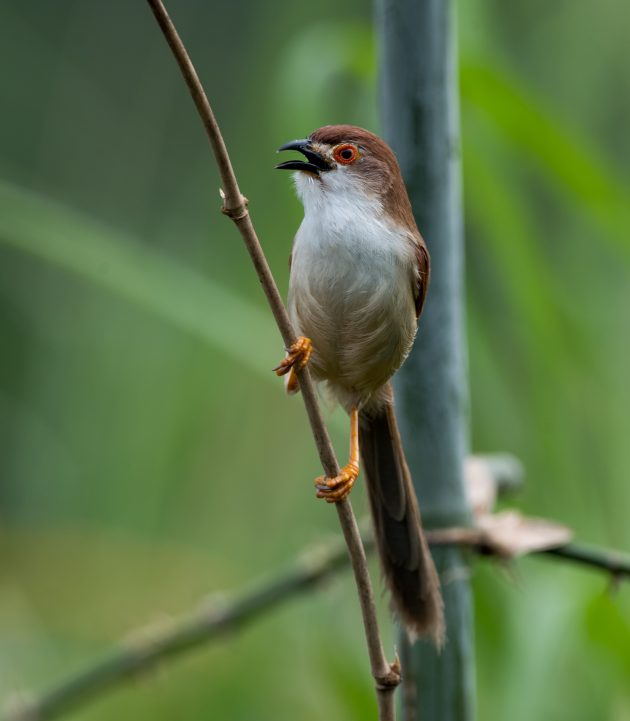
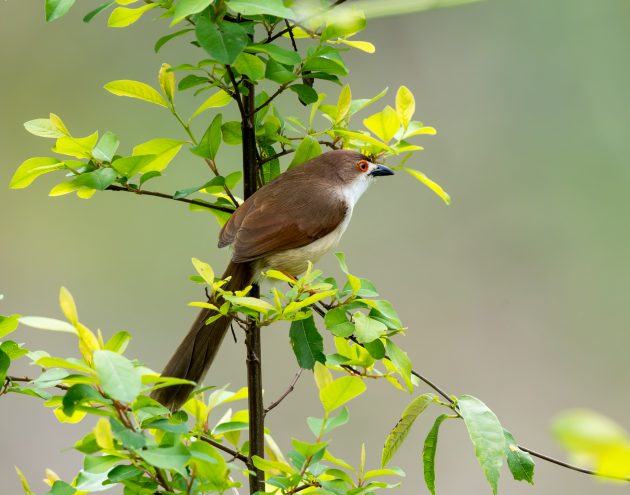
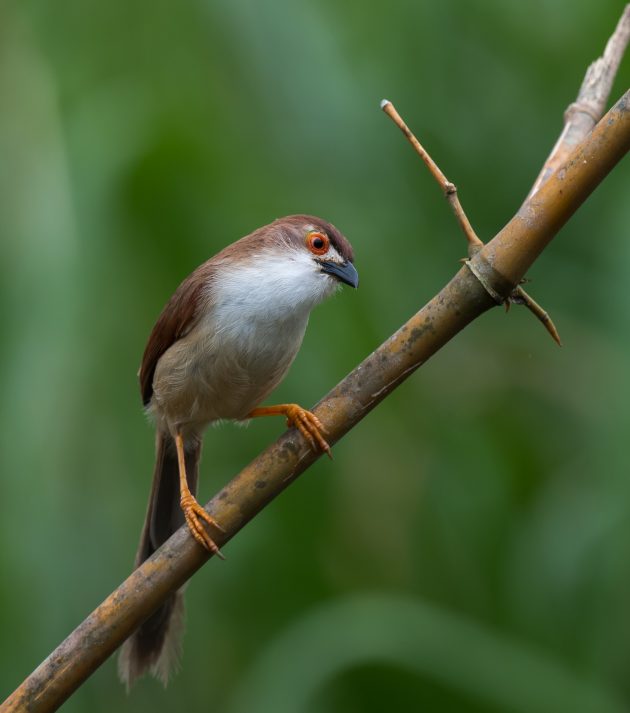
But no, eBird does not describe the Rufescent Prinia as a babbler on sleeping pills.
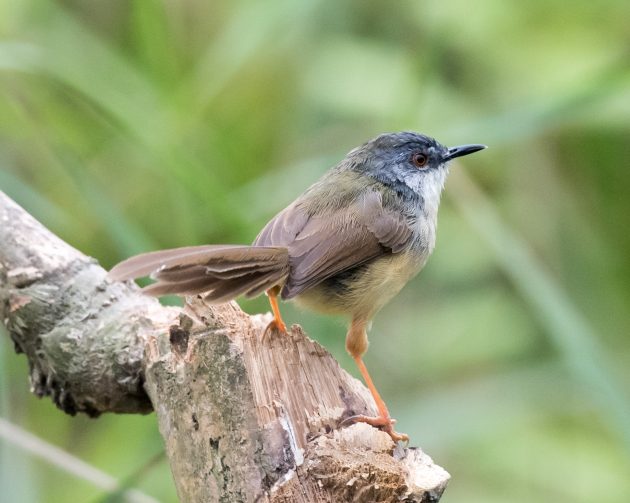













Thanks for another amazing collection of birds! I always know you’re going to blow my mind with your photos and also make me laugh a few times with your commentary. Keep on traveling and sharing.
I really enjoy your posts! Thanks for keeping me entertained and amazed with your beautiful photos.
Hi Kai. Interesting blog. Can the White-eared Heron be found at Nonggang?
Hi Nigel, I am not aware of the White-eared Heron being at Nonggang …